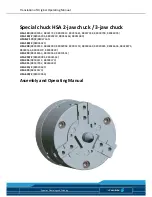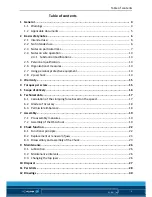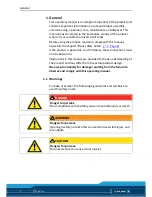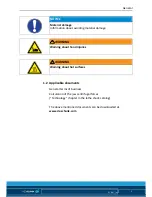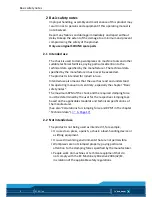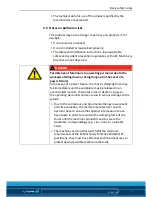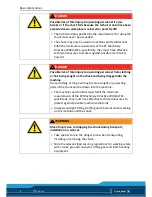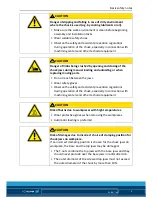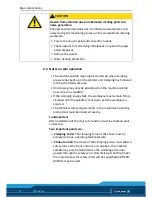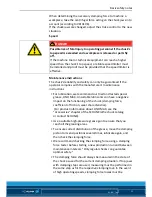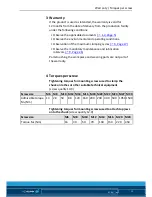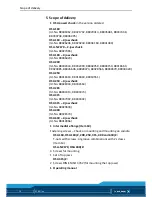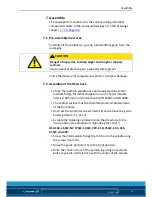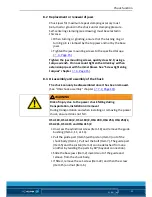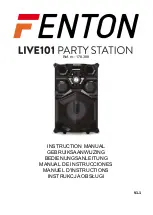
Basic safety notes
01.00| |en
11
When determining the necessary clamping force to machine a
workpiece, take the centrifugal force acting on the chuck jaws into
account (according to VDI 3106).
If the chuck jaws are changed, adjust the stroke control to the new
situation.
Speed
DANGER
Possible risk of fatal injury to operating personnel if the chuck's
top speed is exceeded and a workpiece is released or parts fly
off.
If the machine tool or technical equipment can reach a higher
speed than the chuck's top speed, a reliable speed limiter must
be installed and proof must be provided that the speed limiter is
effective.
Maintenance instructions
The chuck's reliability and safety can only be guaranteed if the
operator complies with the manufacturer's maintenance
instructions.
• For lubrication, we recommend our tried and tested special
grease, LINO MAX. Unsuitable lubricants can have a negative
impact on the functioning of the chuck (clamping force,
coefficient of friction, wear characteristics).
(For product information about LINO MAX, see the
"Accessories" chapter of the SCHUNK lathe chuck catalog
or contact SCHUNK).
• Use a suitable high-pressure grease gun to ensure that you
reach all the greasing areas.
• To ensure correct distribution of the grease, move the clamping
piston to its end positions several times, lubricate again, and
then check the clamping force.
• We recommend checking the clamping force using a clamping
force tester before starting a new production run and between
maintenance intervals. "Only regular checks can guarantee
optimal safety."
• The clamping force should always be measured in the state of
the chuck as used for the current clamping situation. If top jaws
with clamping steps are used, measuring must be performed in
the same step as for the respective clamping task. In the event
of high operating speeds, clamping force losses must be

